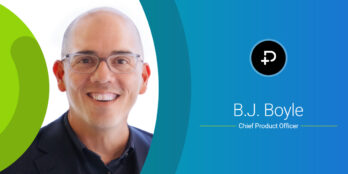
The Importance of Candid Conversations About Care Collaboration
 6 min
6 min
ACOs & Risk-Bearing Providers, Health Plans, Hospitals & Health Systems, Skilled Nursing
Effective care collaboration between acute and post-acute care providers is at the core of improving value-based outcomes. Common barriers exist that often prevent cross-continuum collaboration and impact care transitions. To identify these barriers and work out solutions, it’s important for these stakeholders to have opportunities for candid conversations about what works and what doesn’t.
To this end, PointClickCare’s Care Collaboration Conferences (CCCs) present an opportunity for hospitals, risk-bearing providers, health plans, and post-acute providers to come together and openly discuss key challenges and the opportunities that exist to improve care transitions, standardize data, and strengthen collaboration across the continuum.
We sat down with PointClickCare’s Director of Value-Based Care, Samantha Vosloo, to better understand these networking events and why they are such a valuable opportunity to facilitate compelling conversations around value-based care from multiple lenses.
Putting patients at the center of the conversation
Ultimately, providers across the care continuum share responsibility for delivering care to the same patients. During transitions of care, this often becomes a fragmented process. To get ahead of this, it’s crucial to solve barriers to communication before they lead to reduced visibility during care transitions.
Samantha explains, “We want representatives that connect with patients at each touchpoint on the journey. These events are on-site cross-collaboration opportunities between all entities that support a continuum of care in their local markets.” In the United States, every major health plan, more than 60% of skilled nursing facilities, 45% of hospitals, 2,000 ambulatory clinics, and a total of more than 27,000 long-term and post-acute care providers utilize PointClickCare, helping create the largest care collaboration network in the country.
No matter where an event is held, careful market research ensures the invites are extended to participants who reflect local market dynamics, supporting deeply insightful and relevant discussions. With between 50-100 attendees, the CCC events include stakeholders such as physicians, directors of nursing, nursing facility administrators, population health managers, and more. “I’m a nursing home administrator by trade,” Samantha shares. “What I find most valuable is that this creates a safe space to talk about the real barriers to collaboration in the market. The conversations highlight solutions to barriers like data silos and illustrate what care collaboration looks like across the care continuum.”
What attendees can expect at an event
Care Collaboration Conferences are structured to facilitate these insightful conversations between key stakeholders. Attendees have relevant opportunities to interact with topics that reflect their real-world experiences and interests. The intent is also to connect them to other stakeholders within their communities, and with the seeds for conversation planted, the real networking magic happens.
Where are these care collaboration discussions heading?
Samantha notes that she has observed some common themes develop during the networking sessions. “Providers are realizing that they have to work together to survive in a managed care world,” she says. “The most common thing that I overhear is a call for standardization of data when moving patients through the continuum of care. Also, there’s concern with obstacles and misinformation between partners that prevent efficient care transitions.”
It’s a challenge that flows both ways between hospital systems and skilled nursing facilities (SNFs). SNFs may struggle to get actionable referral information from case managers at the hospital to facilitate efficient transfer of patients out of a hospital bed and into the SNF. Once the care transition occurs, hospital systems relying on manual methods of sharing information like phone calls and faxing has resulted in providers describing patients disappearing into a “black hole” when someone is admitted.
“Working towards eliminating that black hole means providers can then see how patients are doing in the SNF and even call and intervene at the resident level when a patient experiences a change in condition. And if they know the discharge date, they can continue to track them throughout that post-discharge period,” Samantha explains. “So, you can see why it’s important to drive these discussions by bringing people together from across the care continuum, allowing them to tell their stories and collaborate around the best solutions to solve common challenges.”
Additionally, Samantha has noted, “There’s an increased appetite from the SNF market to engage in value-based care arrangements with risk-bearing entities, whether that be pay for performance, pay for quality, or truly risk-sharing.” That interest plays into larger conversations, with SNFs seeking ways to advocate for measuring outcomes based on real-time data rather than claims data. And in turn, the health systems and providers are advocating to the health plans for these mutual goals.
An important theme: social determinants of health
During these events, it’s also worth paying close attention to another common theme: “It’s surprising how much the conversations keep returning to social determinants of health,” Samantha shares. “Is the patient not going to dialysis appointments because they don’t have transportation? Unless you can proactively resolve those social issues, you’re going to have increased spending.”
As hospitals, providers, SNFs, and health plans collaborate around social determinants of health (SDOH), it’s easy to see how real-time data built around SDOH and social planning can prevent unnecessary spending. For example, additional time spent in the SNF while transportation is secured in the scenario described above can cause increased Medicare spending. Clear visibility benefits everyone, including the patient.
Positive outcomes of Care Collaboration Conferences
In the past seven months, over 11 Care Collaboration Conferences, attendees have been able to gain relevant insights into common barriers to cross-collaboration in their markets. As one panelist explained, “We are all on the same team — we may be playing different positions, but in the end, we are all looking for the same results.”
At one event, this search for answers led to spirited conversation around communication challenges that were preventing the hospital system from efficiently placing patients into skilled nursing facilities, including difficulties in sharing data important to priorauthorizations and Medicare reimbursement, and suggestions for possible solutions within PointClickCare tools.
During another portion of the presentation, the financial implications of collaboration challenges were highlighted. As a result, returning patients from post-acute settings to their anchor hospital (when clinically appropriate) was made relevant, helping participants in the post-acute space understand its importance and opening further discussion about tools that can help support this goal.
These interactions help shape events that are, as one attendee put it, “very insightful — there were lots of great ideas on how to collaborate with other facilities.” Together, these conversations are shattering barriers around transitions of care and bringing an end to the days of “my patient, your patient.” Instead, hospitals, risk-bearing providers, health plans, and post-acute providers are seizing these opportunities to build a connected network of seamless care delivery, using meaningful solutions that support collaboration and data sharing.
To find out how PointClickCare can help your organization with post-acute transitions of care, click here to learn more about our PAC Network Management solution. If you are interested in joining a Care Collaboration Conference near you, fill out our contact form and we’ll be in touch.
January 17, 2024





